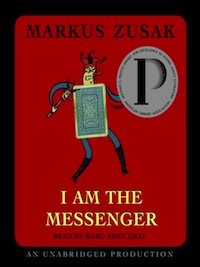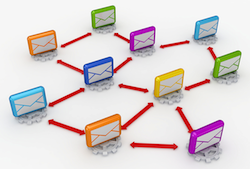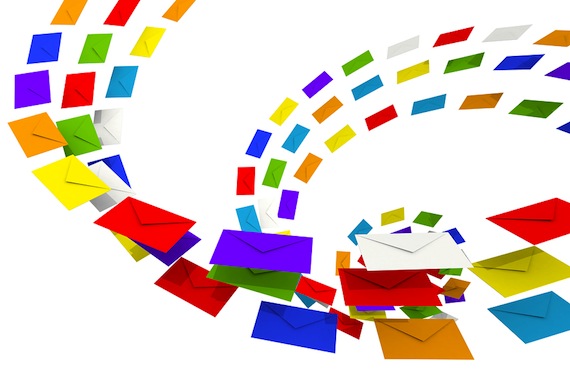Using Chain Letters to Shape a Positive Classroom Culture
Inner-city middle school teacher Mackenzie Grate writes for MiddleWeb about building a positive classroom culture (and other interesting topics). Also see her post on bullyproofing your classroom.

Chain letters have been around as long as I can remember, and I recall the sheer joy of receiving one as a child. That feeling of being connected to other people can be so powerful. As a kid (before the viral internet age) a sealed envelope with a handwritten letter from a student in another state was about the most exciting thing you could ever receive in the mail (aside from birthday cards filled with money, of course).
So building off of that concept and inspired by a YA literature book I recently read – I am the Messenger by Markus Zusak – I decided to experiment with a strategy that I call “Chain Mail of Compassion.”

This was to be the goal with our chain letter “change mail” as well: to help our class members become aware of how they impact others within our own community.
“Dear Jose…”
A few weeks ago, one of my students walked into the classroom to find a letter sitting on his desk with his name penned on it in giant bubble letters. He immediately held it up and screeched, What’s this, miss?!?!
With the most baffled look ever (masking my own amusement), I shrugged my shoulders and continued to welcome in the other class members. As he tore through the envelope, with paper shreds flying like glossy wrapping paper on Christmas morning, he found a note that read:
Dear Jose,
Although we are in the same class, we have never spoken. You probably don’t know my name, or anything about me. But I just wanted to say thank you for coming in and doing your work yesterday. It helped me to be able to learn. When you were working, I was able to concentrate. I hope you have another good day today. If someone else in the room does something today that helps you learn or is nice to you, please write them a letter like I did for you and pass it on. This is a chain letter of kindness.
Thank you,
Your classmate
This of course was a giant experiment. Another student didn’t actually write it, I did. I made sure to write in chicken scratch, misspell a few words, and of course wrinkle it a bit to display a certain level of middle school authenticity.
I went to these considerable lengths because I wanted to see if: (a) he would take the bait and pass on the letter of kindness, and (b) if this would reinforce his positive behavior and help him to continue to make good choices.

To assess the impact of this letter, I had to show Jose that I was aware he had received it. During our homework check procedure, I asked him privately what was in the envelope. He smiled at me and held it up beaming! This was the first sign that the positive reinforcement was working…
I asked him if I could read it, and he said, “Sure.” After scanning the letter, I looked at him with my most shocked face. I leaned down and whispered, “ Who do you think wrote it?” He smiled and said, “I know, miss.” Instantly, my heart skipped. Was he going to say me? This might backfire or flop rather quickly.
I looked around the room and then leaned down again and said, “Who?!?” And he just grinned. It was clear he wasn’t going to tell me.
The plot thickened
I left that day a little bummed that my experiment appeared to have stopped with just him. Although it was exciting to see him focused and feeling good about the positive choices he was making, I had hoped for more. I thought he might at least play along or call me out on writing the letter.
The next day I entered the room and a smile quickly spread over my face because there sat a letter, not on my desk, but on the desk of one of the most timid kids in class. On the front, Jose had sketched the letters of the recipient’s name to ensure the envelope would not be passed over.
As I watched the messenger sit across the room and eyeball the receiver while he opened his letter, I could see the genuine excitement twinkle in Jose’s eyes. He cared. He felt connected. He was excited to make this his classmate’s day better.
I circled around to look from behind as the other student opened his letter, and I could see that Jose had taken the time to draw a very detailed cartoon strip where he illustrated frame by frame how the other child helped him finish a difficult problem in math.
I then looked up at Jose over the illustration and winked at him. He was beaming.
Some classroom chain mail ideas
If you want to implement a “Chain of Kindness” letter project in your classroom, the possibilities are limitless. For example:

► You can create a standard formatted letter that the students can fill out, plugging in the kind act their classmate did that day.
► You can even write a letter openly to a specific student and ask them to pass along some kindness in a chain letter to a fellow classmate.
► Variations might include the teacher sending a letter to a student sharing a favorite quote or brief story about kindness and then have the students “chain” the letter by adding a favorite quote/story and passing the letter along to another classmate. (Be sure to attach plenty of paper!)
If you have implemented this strategy or something similar, I am eager to hear your take on it. What worked for you? How did it impact your class’s dynamic? How did you make it more effective? And if you haven’t tried it yet but have another idea about a fun way to do it, please share that!
Mackenzie Grate has been a Title One middle school ELA teacher in New York City for the past 8 years. She has a BA in English Education and an MS in TESOL from New York University. She is currently earning her MA in Educational Leadership from The College of Saint Rose. Her hope is to one day open a school with her colleagues based on a collaborative teacher leadership model. Follow her on Twitter @ThisTeacherSays or read her musings about all things educational on her blog at MackenzieGrate.com. She goes by “Mack.”
































Great idea Mackenzie! I would like to try to incorporate this into my monthly advisory program that promotes a positive school culture.
Wow! This article hooked me from the start! I am also a teacher! I’ve taught a variety of subjects and grade levels, but have always worked to improve literacy in an impoverished Appalachian culture. No matter the age or subject we teach, encouraging reading and writing for the purpose of positive communications addresses SO MANY ESSENTIAL SKILLS! I was more than a bit disappointed that the story ended before the results of the “experiment “ were revealed. I’d love to hear the rest.
I have an idea that some teachers may like. What if before the experiment begins students are asked to journal about their thoughts and feelings on how every student contributes to the learning environment? You would have to tailor the verbiage for the age of students. You might even use a survey format to get more usable results. Then once the experiment is completed, see how much student awareness and attitudes change? Now we have data! My gut tells me that if used along with other thoughtful activities something like this could be an AUTHENTIC tool for increases community as well as self awareness and responsibility. Thanks so much for sharing!